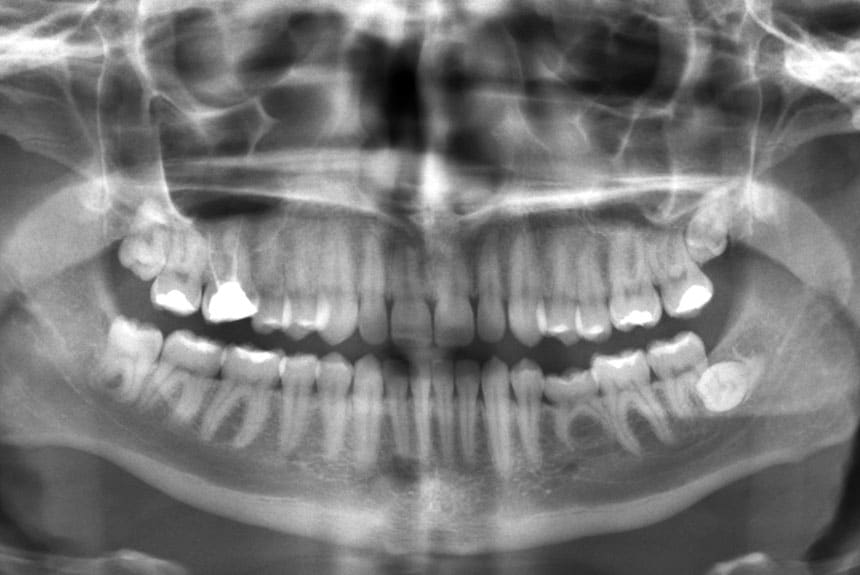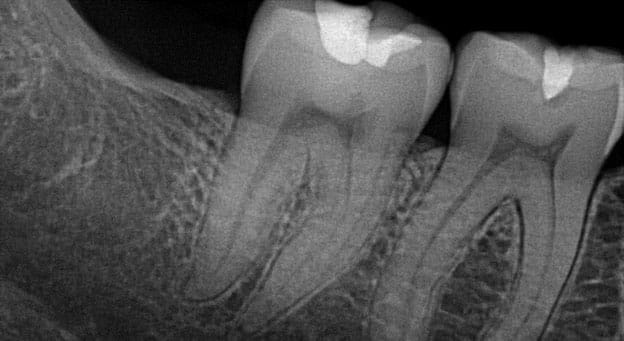What is the importance Of X-Rays? Dental X-rays are images of your teeth that allow the dentist to evaluate your health beyond what can be seen with the naked eye or felt by a dental examination. Dental x-rays are not only important in diagnosing cavities between the teeth and underneath existing fillings but can also aid your dentist in identifying issues such as bone loss, sinus congestion, impacted (not erupted) teeth and even signs of a more serious problem such as cancer. Check out our services page for more information about the digital X-rays we use!
Types of x-rays and why they are prescribed
Bitewings – These are the most commonly prescribed X-rays and are used to detect cavities in between the teeth as well as under existing fillings. We can see bone levels in these images as well. Bitewings are prescribed based on how frequently you get cavities. A high-risk individual may have these check-up x-rays prescribed as often as every year. If the doctor is monitoring an area, a follow-up x-ray may be taken at the next appointment to ensure nothing has changed.
Periapical – A periapical image is taken to assess the tooth including the root. This x-ray can determine if there is an infection present if ligaments have been stretched due to grinding or clenching and although rare, can sometimes even pick up a fracture. This x-ray is often prescribed if the patient is having symptoms such as pain on biting, extreme sensitivity to hot or cold, or if there is a fistula (draining infection) present. It can also be prescribed to monitor root canal treated teeth.
Panoramic – A panoramic x-ray may be prescribed to check the wisdom teeth, bone levels as well as the temporomandibular joint (TMJ). This image gives a good overview of the overall health of the jaw. Sometimes with this image, bigger health concerns can be identified and the patient will then be referred to the appropriate specialist.
What are the risks associated with radiographs?
Dental x-rays, like any x-rays, involve radiation. In the case of dental x-rays, most offices now use digital equipment and the levels of exposure to radiation are very low. Dental professionals are highly trained in radiographic exposure and will provide you with protection in the form of a lead apron while radiographs are being exposed. Radiographs are only prescribed as needed and on an individually assessed basis to further reduce exposure. Radiographs are your best chance of finding potential problems with your teeth early and when treatment is the least invasive. As always, any questions on this topic about the Importance of X-Rays, you are very welcome when you are in the office or you can always give us a call!





